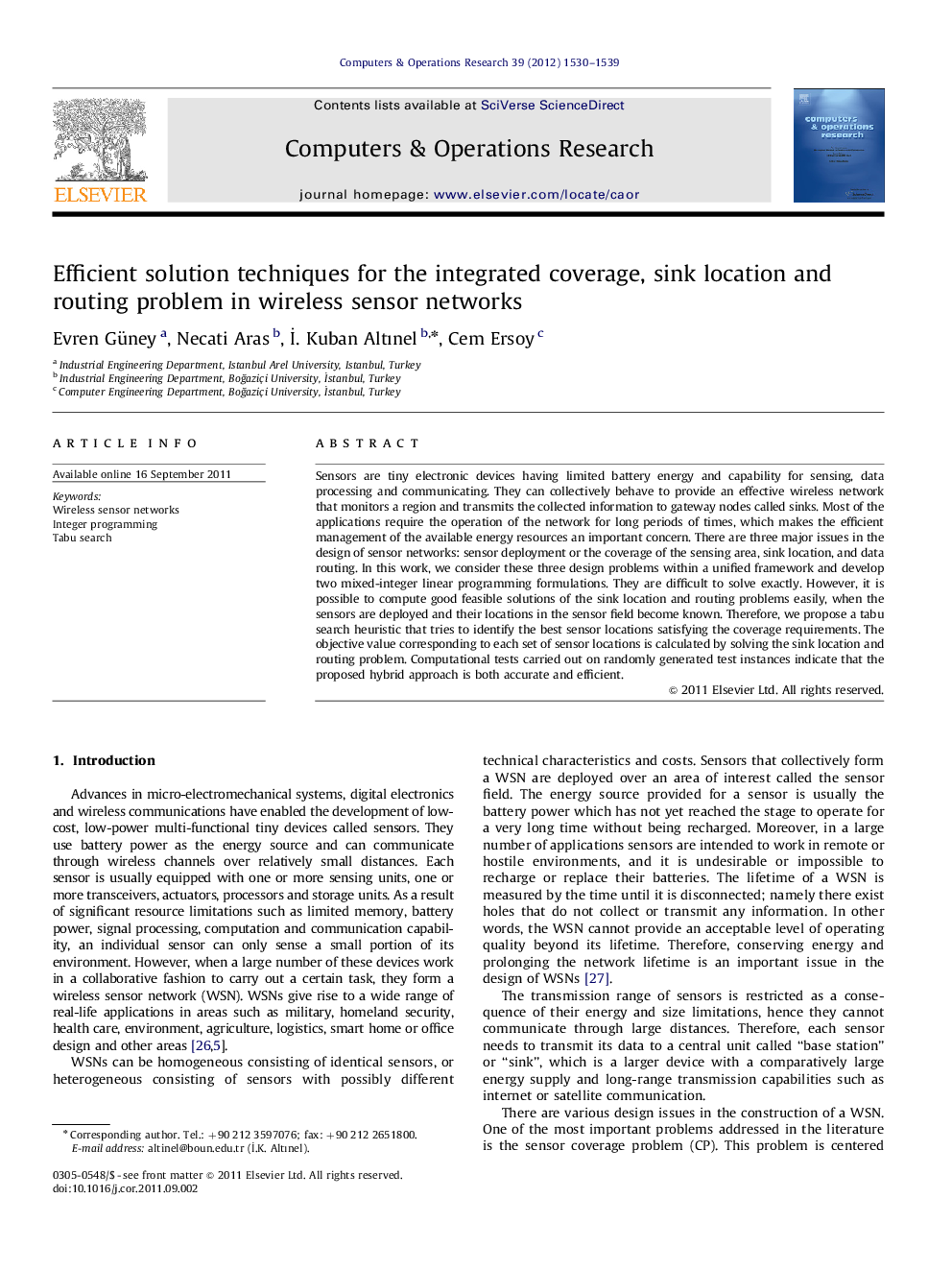| Article ID | Journal | Published Year | Pages | File Type |
|---|---|---|---|---|
| 10347983 | Computers & Operations Research | 2012 | 10 Pages |
Abstract
Sensors are tiny electronic devices having limited battery energy and capability for sensing, data processing and communicating. They can collectively behave to provide an effective wireless network that monitors a region and transmits the collected information to gateway nodes called sinks. Most of the applications require the operation of the network for long periods of times, which makes the efficient management of the available energy resources an important concern. There are three major issues in the design of sensor networks: sensor deployment or the coverage of the sensing area, sink location, and data routing. In this work, we consider these three design problems within a unified framework and develop two mixed-integer linear programming formulations. They are difficult to solve exactly. However, it is possible to compute good feasible solutions of the sink location and routing problems easily, when the sensors are deployed and their locations in the sensor field become known. Therefore, we propose a tabu search heuristic that tries to identify the best sensor locations satisfying the coverage requirements. The objective value corresponding to each set of sensor locations is calculated by solving the sink location and routing problem. Computational tests carried out on randomly generated test instances indicate that the proposed hybrid approach is both accurate and efficient.
Related Topics
Physical Sciences and Engineering
Computer Science
Computer Science (General)
Authors
Evren Güney, Necati Aras, Ä°. Kuban Altınel, Cem Ersoy,
